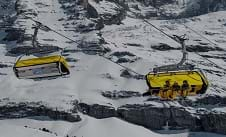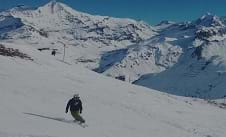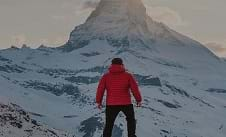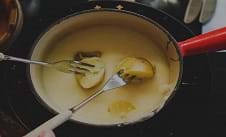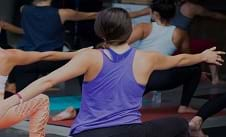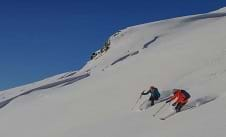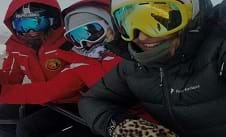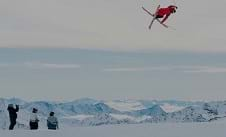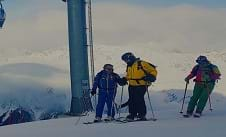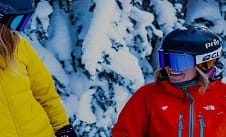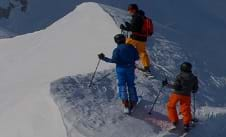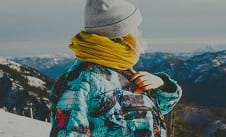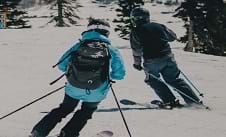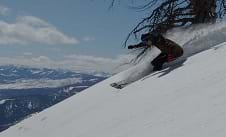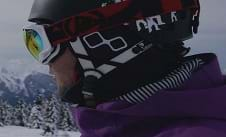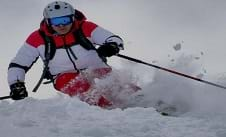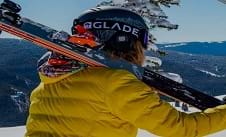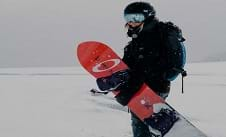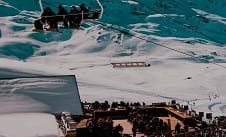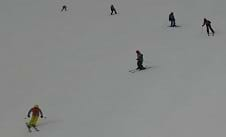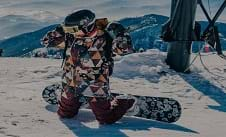Ski fitness guide
Skiing is one of the top sports for exercising your whole body. The best part is that you easily forget the benefits of skiing on the body and fitness as it is such great fun! Skiing and snowboarding are both physically demanding sports and we’ve covered a few of the ways to help you prepare your body for the slopes in order maximise your enjoyment of your ski holiday.
Mostly skiing is only possibly for a few months of the year, so it can take its toll on the body if minimally prepared. Being fit for skiing not only builds up endurance, helps prevent injury and strengthens muscles, it also burns around 500 calories per hour, which is a great excuse to indulge throughout your trip as you’ve certainly earned it!
with your own travel concierge. Don’t hesitate to drop us a line – we’ll
help plan your perfect Ski Holidays.
020 7770 6888 ← online or call ↴
020 7770 6888
Benefits of training for skiing & snowboarding
Skiing and snowboarding are great cardiovascular exercise, involving stamina and short bursts of aerobic fitness. You don’t have to possess Chemmy Alcott levels of fitness but doing some training prior to your ski holiday can help you ski for longer and without the need to head back early to rest your sore muscles and miss out on all the après fun.
The benefits include:
- Preventing injury – hitting the slopes after a long time away from them can be a shock to the body.
- Strengthen muscles – building muscle around joints to protect joints and will enable you to ski for longer. Stronger muscles will also help to prevent injury.
- Strengthen and stabilise joints – a lot of pressure if put on the joints when skiing or snowboarding, in particular the knees and ankles.
- Improves cardiovascular fitness – for off-piste and backcountry skiing, this is especially important. Also great for those occasional uphill climbs.
- Burns calories – on average skiing burns around 500 calories per hour. All the more reason to stuff your face with tartiflette at lunchtime!
Ski workout plans
The main muscles used for skiing are the quads, glutes, hamstrings, calves, abs, back and arms, so pretty much the entire body! It’s important to be in tip-top shape prior to your ski holiday so you don’t return home feeling as though your body needs another week to recover.
For a comprehensive, easy to follow guide, try this great recommended ski workout plan from SELF. If you’re looking for something more advanced to suit your level of expertise, Pure Powder has a detailed ski fitness plan.
Snowboard workout plans
Snowboarding relies heavily on core strength, and this is certainly one to prep for prior to your ski holiday. To make sure your body can handle the demands of the mountains, it’s wise to start doing some exercises to get in shape for the slopes.
For a thorough fitness plan for snowboarding, check out Burton’s snowboard workout plan. For those wanting a more in-depth workout guide for snowboarding, we recommend this snowboard fitness plan.
Best exercises for keeping ski fit
Skiing and snowboarding rely heavily on core strength, endurance, and flexibility. Some of the best exercises for getting ski-fit are the following:
Squats
The best way to start your ski training regime. Stand up straight with feet just wider than shoulder-width apart, push your hips back, and bend your knees until your thighs are parallel to the floor. Try and do three to four sets of 20 with a minute rest in between sets. Squats can also be done against a wall too.
Lunges
Stand with feet together and step with one leg forward, bend down so the front leg forms a right angle at the knee and lower your body until your back leg almost touches the floor. Do four sets of 20 reps with a 30 second rest in between.
Planks
Start in a press-up position with arms and body straight and feet close together. For a slightly easier but still effective position, plank with your knees on the floor rather than your feet.
Core exercises
Core exercises such as Russian twists, sit ups/crunches. Lie down on your back with knees bent. Hold your head lightly with your hands and slowly raise your upper body and head off the floor towards your knees. For the Russian twist, each time you raise your body, twist the torso towards the left and the right, alternating sides on each repetition.
Stretching
Lie on the floor with your buttocks and hips against the wall and feet up against the wall. Check out these simple yoga stretches to aid your preparation for the slopes.
Ski fitness FAQ:
Skiing is fantastic exercise and burns calories without you even realising. The number of calories burned depends on the type of skiing you're doing and the individual's weight. A person of 75kg will burn approximately 350 calories per hour on a gentle downhill piste. Cross-country skiing, however, can burn up to around 1300 calories an hour!
An adult will generally burn around 1500-2500 calories per day, depending on the amount of skiing you do. The heavier you are, or the more muscle mass you have, the more calories you will burn. Men also tend to burn more calories than women due to their anatomical make-up. The number of calories you burn will increase if you’re hitting up the moguls or going off-piste as your body is working harder.
Skiing is one of the best types of activity for working out your whole body. For downhill skiing, the main muscles being used glutes, quads, hamstrings, abs, arms, back and calves. Skiing is an excellent cardiovascular exercise, is excellent for strengthening and defining muscles, weight loss, and it also benefits your mental well-being.
Squats are one of the best methods of exercise to prepare you for the burn when skiing. Having a strong core will also enable you to last longer on the slopes, so add in the plank as part of your exercise routine. Doing some cardio training will benefit, and you’ll need plenty of endurance to make the most of the slopes.
To ensure that you are in peak condition by the time the season rolls around, try to maintain a solid workout routine focusing on the muscles used for skiing. Hiking and uphill walking is a great way to build up cardio endurance. Why not take up rollerblading as a form of exercise during the off-season? It’s good for balance, uses all the right muscles, strengthens the core, and it’s fun!






